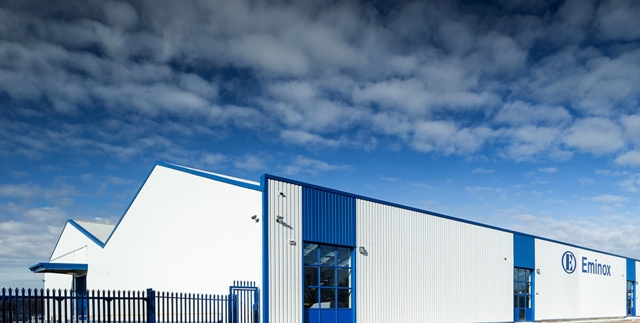Government, local authority and representatives from the Department for Transport attend a workshop in Gainsborough to assess the role that emissions reduction technology can play
Eminox, one of Europe’s leading designers and manufacturers of emissions control technology to the heavy-duty diesel vehicle sector, hosted a workshop to highlight the positive impact being made to local air quality by retrofitting SCRT® exhaust emissions reduction systems to bus fleets in the UK.
Keynote speaker at the prestigious event was global expert, Dr Andreas Mayer, from VERT Association. VERT is a Swiss non-profit organisation which aims to establish and approve the Best Available Technology (BAT) for combustion engine exhaust emission control, for both retrofit and original equipment. VERT believes the high filter quality required in these systems can lead to reduced treatment costs for many serious ailments, including cancer, cardiovascular, allergies, asthma and probably even Parkinson’s and Alzheimer’s.
Dr Mayer explained the high health cost burden of air pollution and why it was vital that the issue was tackled on existing vehicles rather than waiting for new vehicles to dominate the sector, which could take more than 20 years. “Society needs mobility and diesel engines will be needed for many years to come. The challenge is that engines today are more toxic than 20 years ago because they are emitting smaller particles,” he told the workshop.
Martin Taylor, retrofit product development manager for Eminox, told the audience about third generation SCRT® emissions reductions systems and how they can virtually eliminate NOx. Bridging the gap between legislated emissions figures and local air quality requirements, the brand new technology comes as part of continued SCRT® innovation – simultaneously reducing PM and NOx levels from diesel engines in urban applications, while minimising secondary emissions. As well as meeting the tightest emissions regulations, the new catalyst formations have reduced total system volume significantly, while delivering optimum on-road results.
Alongside an explanation into the technology’s real-world capability, Martin highlighted roadside performance figures from initial testing units, which have already seen NOx reduced by 95% and NO2 lowered by nearly 97%.
Attendees were also able to see how Metro, the West Yorkshire Passenger Transport Executive, is leading the way in addressing air quality in West Yorkshire by having SCRT® technology fitted to 119 BM Condor school buses from Leeds under the Clean Bus Technology Fund; a Department for Transport initiative that provides grants towards reducing NOx emissions from public transport. They saw a BMC Condor bus, in Eminox’s brand new workshop facilities, being equipped with an SCRT® system that has been proven to reduce NOx by 97%, particulate matter (PM) by 94% and NO2 by 56%. This effectively upgrades the school buses from Euro 3 to beyond Euro 5 emissions performance, at a fraction of the cost of buying new vehicles.
Liam Kennedy, principal engineer, fuels and lubricants, at Millbrook Proving Ground explained the tests that had been devised to accurately measure the emissions reductions delivered by SCRT® in real-world environments, while Finn Coyle, environmental manager at Transport for London, talked about the role SCRT® had played in reducing harmful emissions at the roadside after being retrofitted to more than 1,000 buses operating on the most polluted routes. Alongside highlighting TFL’s innovative approach to lowering NOx, Coyle presented real-life data to demonstrateLondon’s pioneering approach to emissions reduction and on-street monitoring of NO2.
David Pryke, head of the air quality group at the Department for Transport said it was vital that those involved in local transport and protecting public health understood the different type of emissions from diesel vehicles and the technology applications available to help mitigate the problem.
Nick Lyons, Eminox managing director, added: “Eminox has successfully retrofitted SCRT® emissions reduction technology to more than 1,000 buses in London, giving both Transport for London and Millbrook the opportunity to thoroughly investigate the positive impact this technology is making in real-world environments.
“With the Euro VI standard mandatory for all new vehicles from 2014, DPF + SCR technology is already being integrated on new vehicles to ensure they meet the stringent new targets for cutting emissions. The challenge for both bus operating companies and local authorities is that they have thousands of older buses which are still fit-for-purpose in every other way, but do not meet the new standard and continue to pollute our cities and contribute to urban health problems.”
The Eminox SCRT® system is a combination of CRT® (Continuously Regenerating Trap) and SCR (Selective Catalytic Reduction) technology that virtually eliminates particulate matter, hydrocarbons and carbon monoxide, while also reducing NOx emissions by over 90%. New catalyst formulations and extensive system calibration mean that buses as old as Euro II can be retrofitted to reach emissions performance levels that not even today’s newly manufactured vehicles achieve.
Back to News and Features